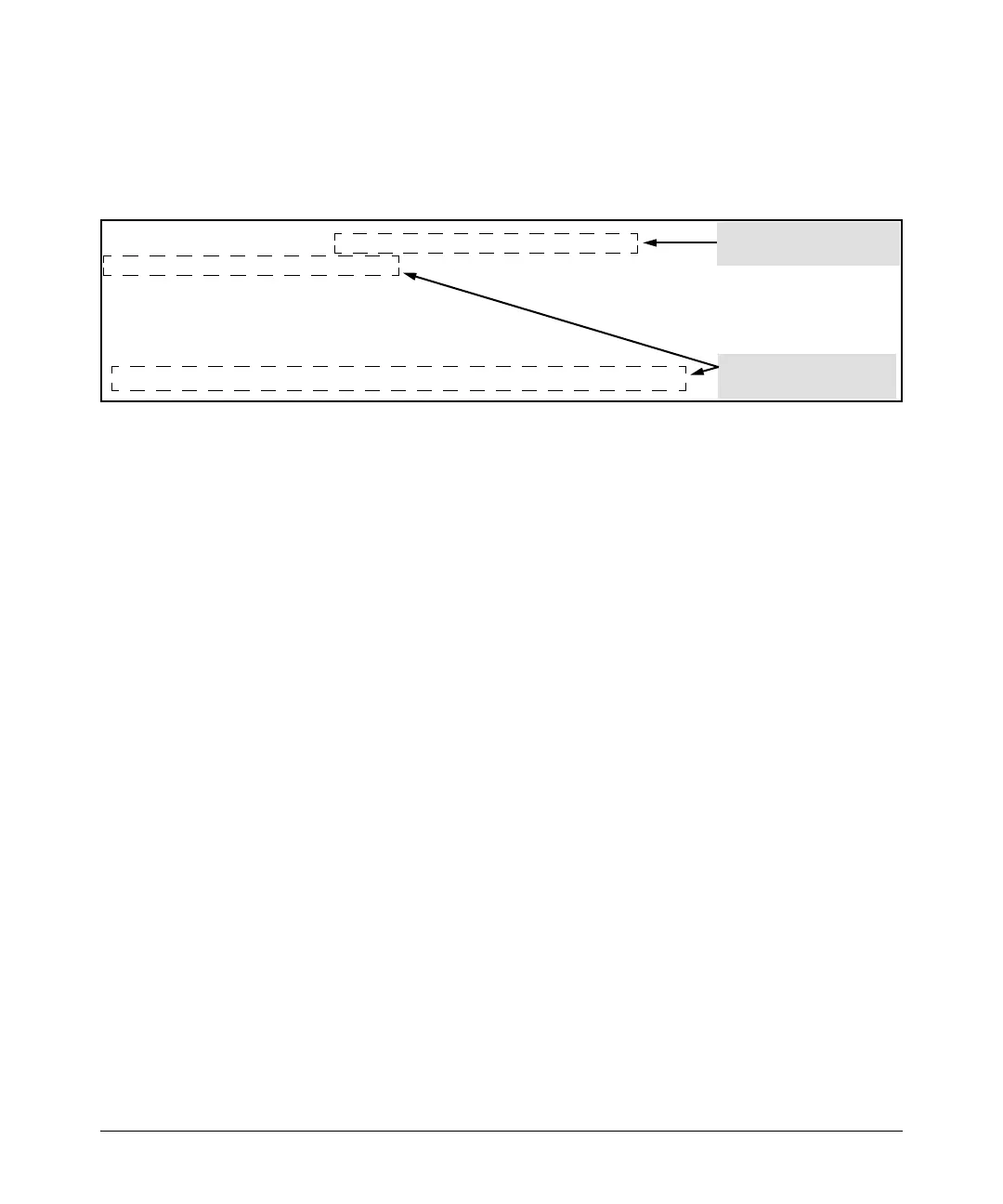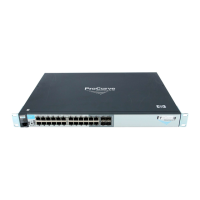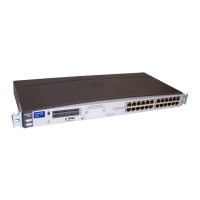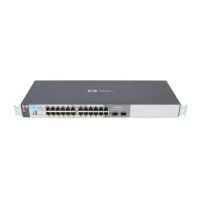Troubleshooting
Diagnostic Tools
“remote-01” in another domain named common.group.net. As long as this
domain is accessible to the DNS server configured on the switch, a traceroute
command using the target’s fully qualified DNS name should succeed.
ProCurve# traceroute remote-01.common.group.net
traceroute to 10.22.240.73
1 hop min, 30 hops max, 5 sec. timeout, 3 probes
1 10.28.229.3 0 ms 0 ms 0 ms
2 10.71.217.1 0 ms 0 ms 0 ms
3 10.0.198.2 1 ms 0 ms 0 ms
4 10.22.240.73 0 ms 0 ms 0 ms
Fully Qualified Host Name for
the Target Host
IP Address for Target Host
“remote-01”
Figure C-20. Example Using the Fully Qualified Domain Name for an Accessible Target in Another Domain
Configuring and Using DNS Resolution with Ping
and Traceroute Commands
1. Determine the following:
a. the IP address for a DNS server operating in a domain in your
network
b. the domain name for an accessible domain in which there are hosts
you want to reach with ping and/or traceroute commands. (This is the
domain suffix in the fully qualified domain name for a given host
operating in the selected domain. Refer to “Terminology” on page
C-50.) Note that if a domain suffix is not configured, fully qualified
domain names can be used to resolve ping and traceroute commands.
c. the host names assigned to target IP addresses in the DNS server for
the specified domain
2. Use the data from steps 1a and 1b to configure the DNS entry on the
switch.
3. Use either ping or traceroute with the host names for the target devices
whose connectivity you are testing or troubleshooting.
C-52
